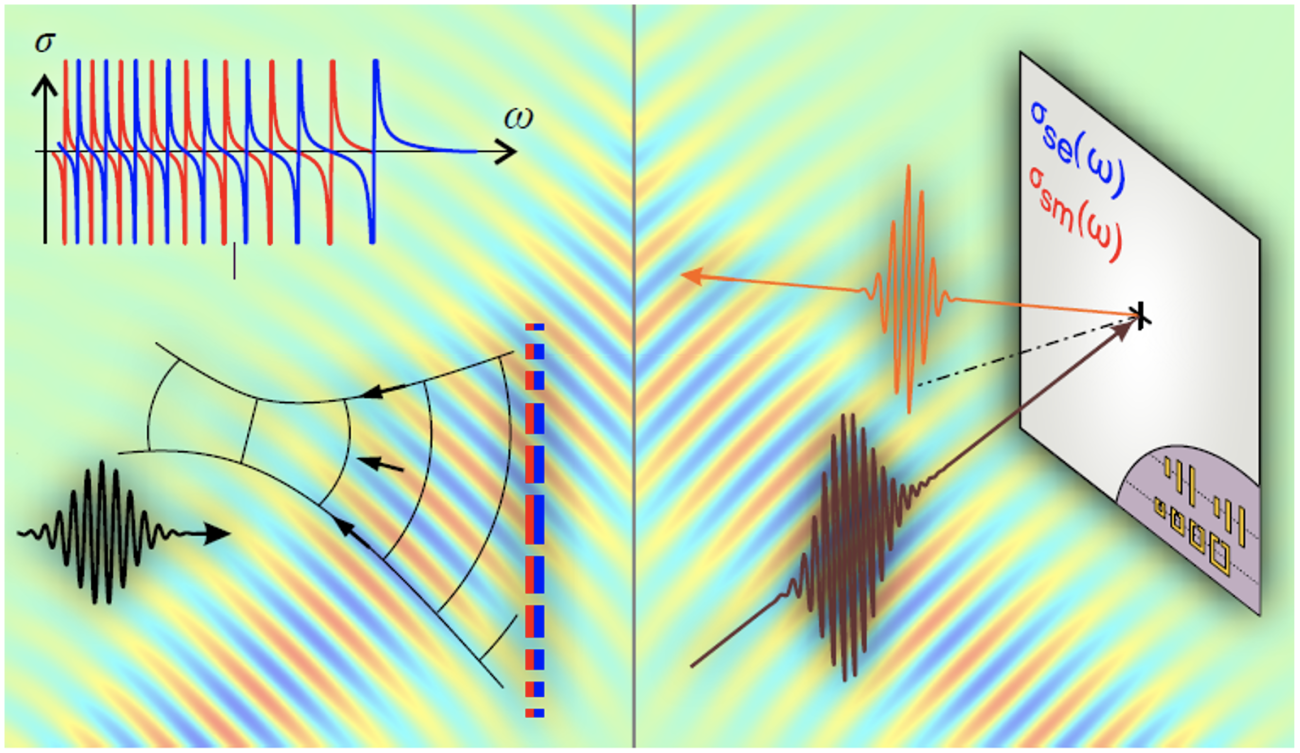
Metamaterials are artificial materials that enable the realization of novel optical properties unattainable in nature. This project explores the foundational theoretical understanding, numerical analysis, design, fabrication, and characterization of metamaterials, and their feasibility for technological applications, and targets current fundamental problems and opportunities in controlling light with matter and matter with light.
We develop metasurfaces and general “meta-”boundaries that overcome inherent bandwidth limitations in resonant metamaterials; enable arbitrarily large phase response with engineered temporal and spatial dispersion; and can potentially replace bulk optics with surfaces. We enhance nanoscale light-matter interactions by coupling quantum gain to optical far-fields to achieve stable amplification and metasurface lasers with non-trivial out-coupling or coherent surface plasmon and other dark near-field sources; manipulate the electromagnetic vacuum seen by quantum objects in metasurfaces to create THz sources and nonlinear photon energy-conversion; and develop imaging theory for deeply subwavelength light-matter interactions for THz-SNOM experiments and coupling or isolation between quantum-information devices and electromagnetic radiation. By targeting nanoscale optical forces for control of matter with light, we create coherent opto-mechanical coupling, tunability, and nonlinearity in metallized-DNA meta-molecules. We will understand abstract fundamental aspects of coherence and disorder or spatial order-beyond-periodicity relevant for bio-inspired self-assembled metamaterials.
This work expands our physical understanding of the interaction of light with both classical and quantum matter and will advance modern metamaterials. It aligns with BES priorities, the recent 2015 BESAC report on how to exploit coherence in light and matter, and it leverages theoretical and experimental expertise within the FWP and unique interdisciplinary collaboration between FWPs.
Project Members:
Principal Investigator: Thomas Koschny
Co-PI: Jigang Wang
Scientific Support Staff: Lei Zhang
